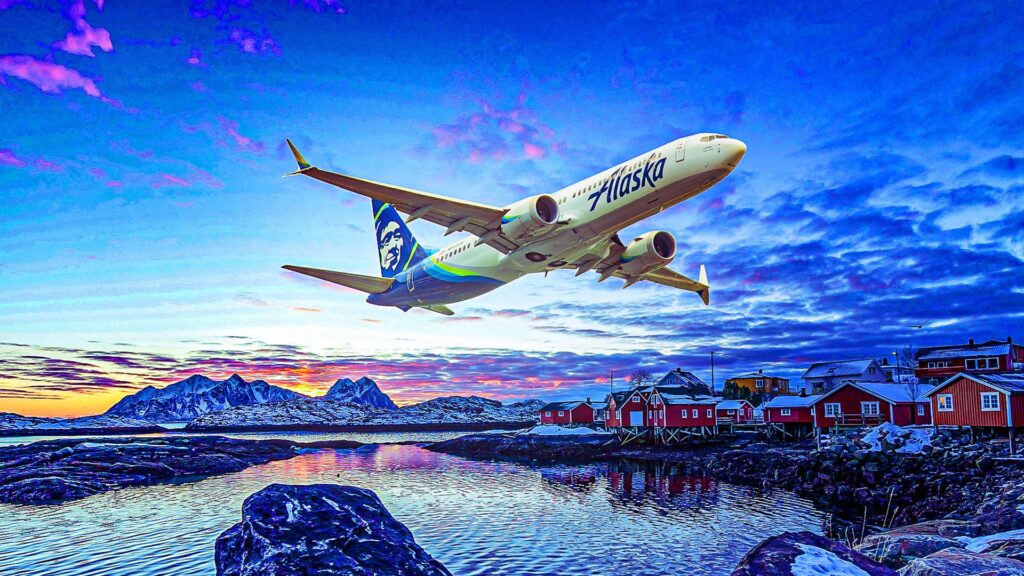
Alaska Airlines has recently made headlines for both significant achievements and operational challenges. The airline celebrated a milestone in its integration with Hawaiian Airlines by obtaining a Single Operating Certificate from the Federal Aviation Administration (FAA). This accomplishment marks an important step for the airline, but it comes in the wake of a third IT outage this year, which is projected to cost the company millions.
Current Fleet Overview
As of 2025, Alaska Airlines primarily operates the Boeing 737 family for its mainline services, having phased out its last Airbus A320 series jets from the former Virgin America fleet in October 2023. The airline currently boasts a total of 244 mainline aircraft, with a notable 90 aircraft belonging to the Boeing 737 MAX family. This includes 10 of the popular MAX 8 variant, which are just 0.9 years old, with an additional 10 on order to enhance the airline’s fleet further.
According to data provided by ch-aviation, the 737 MAX aircraft configurations typically feature either 12 first class and 147 economy seats or 16 first class and 145 economy seats. The 737 MAX 9 variant, of which the airline operates 80 with an average age of 3.1 years, accommodates 16 first class and 162 economy seats. Looking ahead, Alaska Airlines has also placed orders for 63 737 MAX 10s. CEO Ben Minicucci expressed confidence in the airline’s financial stability, stating, “We’re proud of the strong financial foundation that uniquely positions Alaska Airlines to make this commitment to our future.”
Older Generations and Regional Partners
Despite the focus on the newer Boeing 737 MAX series, the previous-generation 737NG family remains integral to Alaska Airlines’ operations. The airline operates 11 Boeing 737-700 aircraft, averaging 25.6 years in age, which feature 124 seats across two classes. Additionally, Alaska Airlines flies three cargo-configured 737-700 BDSF jets.
The airline’s fleet also includes 59 737-800 models, which average 17.6 years old and typically offer a two-class configuration of 12-16 first class seats and 145-150 economy seats. Alaska Airlines has two cargo-configured 737-800 BCF freighters in its fleet, further diversifying its operational capabilities.
The largest 737NG aircraft in Alaska Airlines’ fleet are the 79 Boeing 737-900ERs, with an average age of 9.8 years. These aircraft feature a two-class layout with 174 seats, serving routes primarily between the airline’s hubs on the West Coast of the United States.
In addition to its mainline operations, Alaska Airlines benefits from its regional subsidiary, Horizon Air. This Seattle-based carrier exclusively operates Embraer E175 regional twinjets, which are utilized for feeder services. Currently, Horizon Air has 47 E175 aircraft in its fleet, with three additional units on order. These jets average 5.5 years in age and are configured with 12 first class and 64 economy seats, adhering to a capacity limit of 76 seats due to U.S. regional aviation regulations.
The first class cabin on the E175 is arranged in a 2-1 configuration, offering seats that are 20 inches wide with a pitch of 37.8 inches. In the economy section, all seats measure 18.2 inches in width; 12 of these provide extra legroom at 33.8 inches of pitch, while the remaining 52 have a standard pitch of 30.3 inches.
Overall, Alaska Airlines is navigating a period of both growth and challenges. With a solid fleet strategy focused on modern aircraft and the recent milestone with Hawaiian Airlines, the airline is positioning itself for future success, even as it addresses the operational hurdles that have arisen this year.







